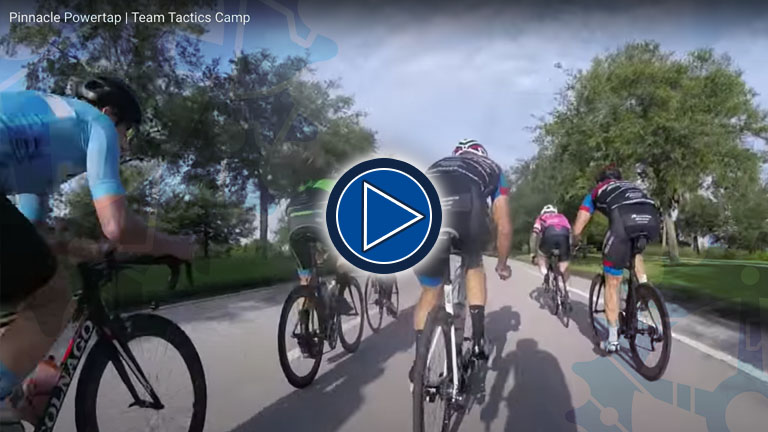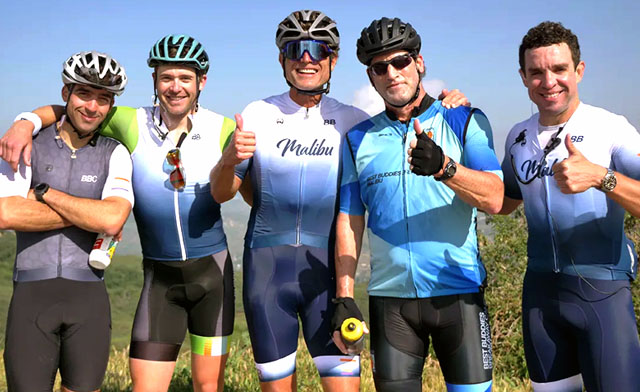
We have entered a new cycling season. Entering a new season requires the development of a training plan that will enable you to perform your best all year long. As you progress through the season, its natural to begin to favor certain facets of your training, but neglect others that may be just as important. People have a natural propensity to focus on tasks and training areas that they are already good at. This generally occurs because you enjoy investing yourself in those facets of training.
However, there are negative consequences to not focusing on all aspects of your training. Focusing only on what you do well, can greatly impact your power profile negatively. In essence, doing what you favor, as opposed to what you need to become more successful ultimately stunts your growth and minimizes the potential to return desired race results. The purpose of this blog is to equip you with five pillars behind a successful year. These pillars help design a road map to navigate segments of training and racing that athletes tend to struggle with over the course of a season. Structure, strength training, recovery, motivation, and date review are all essential pillars in this sport.
Structure: Prior planning promotes more effective training and results while eliminating a deficit in your performance. If youre riding without structure it makes it difficult to assess the effectiveness of your training. The importance of structure when coupled with data tracking, which will be covered later, provides a viable means of quantifying performance and determining training effectiveness. Its vital to assess how proficient you are in relationship to the energy systems required to meet the demands of the events you are targeting. The bottom line is, strategically develop a plan, regularly monitor your plan and make adjustments if you are not progressing towards your goals.
A cyclist should plan out their training schedule 6-8 weeks in advance. You need to be strategic in your planning in order to prevent the classic pitfall of being overly ambitious with your plan in the beginning. Use specific benchmarks to assist in plan development. Data to consider when develop your plan should include: Weekly TSS (Training Stress)/IF (Intensity Factor) values, weekly ride time in hours, and a review of previous training schedules. When analyzing mile growth each week, remember not to increase weekly training volume by more than 7-10%. Developing a quality training structure not only keeps you focused, it also provides a tangible road map to track trends, maintain balance, and hold you accountable.
Strength Training: Regardless of age, the gains associated with strength training are undeniable. Power is defined as force times speed, more power comes about by pedaling faster for the same force, delivering more force, or a combination of the two. Modern science and the correlating studies confirm the importance of strength training. Strength training can, in fact, help increase force and ultimately enhance various other facets of your training. Similar to determining your cycling structure, the same should be done in the area of strength training. Ensure that your plan is detailed and is in sync with the various phases of your on the bike training. When developing your strength training schedule follow these phase recommendations: Transition Phase (3-4 weeks), Muscle Endurance (4-6 weeks) Maximum Strength (3-4 weeks) and the Maintenance Phase.
Miscues in strength training can occur in many areas. In order to avoid miscues, ensure that your plan moves with the different phases of your cycling specific training. Be sure to be conscience of on the bike specific intervals designed to transfer your strength to usable power. Be consistent, stick with your plan, and make changes if needed to ensure you are making physiological adaptations. Finally, you must identify imbalances and focus on reversing those imbalances. In addition to understanding the importance of developing a riding and strength training structure, the athlete must also understand how to effectively manage recovery.
Recovery: Its not how much work you can log, but how well you can recover from the quality work you log that truly dictates your fitness over the course of the season. The training formula is basic: Training = Stress + Recovery.
There are many important facts that contribute to your recovery. First of all, sleep is essential. According to Hanson, Sleep is extremely important for numerous biological functions and sleep deprivation can have significant effects on athletic performance, especially sub-maximal, prolonged exercise. From the available evidence it appears that athletes may be obtaining less than the necessary eight hours of sleep per night and that increasing sleep (sleep extension) or napping may be useful to increase the total number of hours of sleep and thereby enhance performance.
In addition to sleep, diet and weight can also impact recovery. Diet and weight are extremely important and cannot be effectively communicated in this blog at the level necessary. However, you must understand that recovery starts before the ride is even over and your overall recovery is directly affected by your diet and current body composition. Dont let this area go unattended.
Finally, there are specific recovery products that have quite a buzz. For example, examine the Marc Pro and NormaTec compression .
Motivation: How can motivation be defined? Well, Inspiration+ Action= Motivation. Staying motivated from January through October is a daunting and sometimes overwhelming task. Similar to life cycles, your motivation has its own cycles. First, you must be able to identify your motivation cycles or patterns. Once you identify areas that need to be improved, implement changes in a proactive fashion that will help solidify growth. Everyone struggles with motivation at some point, when those moments resurface, it is important to have a plan.
First of all, find a training Partner. Having a buddy to train with will not only help get you out on the bike, but it will also help push you that extra 1-2% on your tougher workouts. Dont have any friends that you can train with, train with a group.
Secondly, write down you goals. Put your goals in a place where you will be forced to see them every day. You cant neglect to acknowledge your goals and training if you are faced with them each and every day.
Finally, change your training if your motivation is lacking. Switch up the time of day you train, implement cross training, or create new workouts. If still have phases where you are unmotivated purchase a new kit. Looking good will help you feel better, a more vibrant you equates to more activity.
Data Review: It is important to understand that continuing to do what you have always done does not mean that you will continue to receive the same results. Archiving and reviewing power data in a systematic fashion will accomplish a myriad of things. The primary benefit of data analysis will enable you to determine how efficient you are with the time you have available to train. When examining weekly ride time, sort the information by time spent in training zones. If you discover that 30% or more of your time is spent in zone 1, you know you have room for improvement. In addition to efficiency, the data will undoubtedly show how effective your plan has been with regard to growing limiters that are already quantified for you by Training Peaks. Lastly, the data and correlating graphs will help devise a plan as you progress through your training. The information presented in charts similar to the PMC (performance management chart) are invaluable with regard to ensuring an athlete is on target for marque events. Form= Fitness- Fatigue. Without understanding the information presented on a PMC graph it is difficult to quantify how fit you need to be to have the greatest odds of producing your best power.
These 5 pillars are in place to keep you balanced while also safeguarding against neglecting components of your training. For many this is a passion and a hobby, therefore keep training fun and continue to test yourself. Make new goals and design workouts that not only align with the demands of your events, but also provide workouts that will push you. Through this process its essential to stay consistent, monitor your results and analyze the data. In our next blog we will cross reference two early season race files and the correlating data/ circumstances to help equip you with an angle to evaluate your own trajectory. If you have difficultly juggling life and training, I can assist in the development of a plan that meets your individual needs!
Halson,S.L. (2013). Sleep and the Elite Athlete. Sports Science Exchange. Volume 26; 113, 1-4. Retrieved from https://www.gssiweb.org/Article/sse-113-sleep-and-the-elite-athlete


